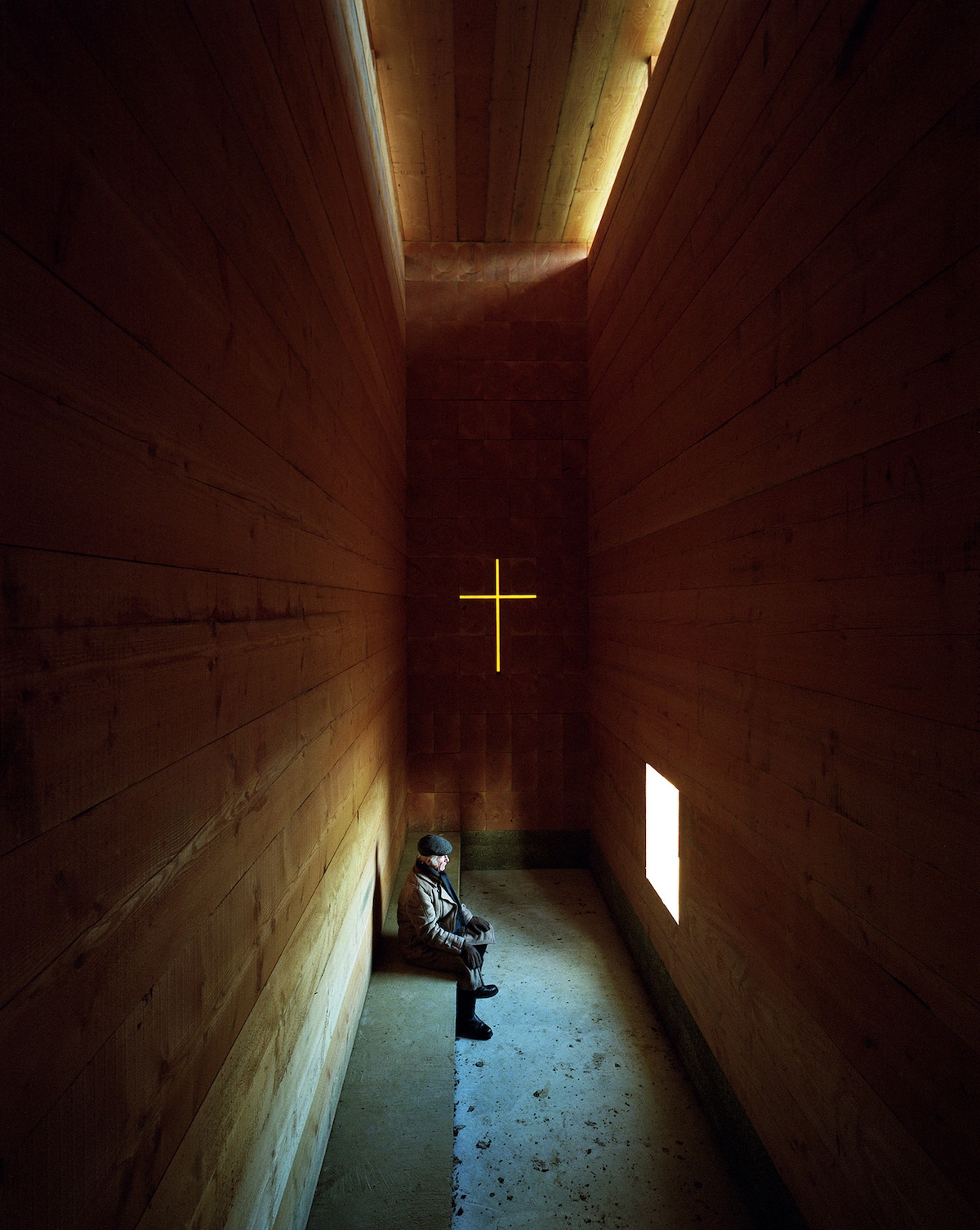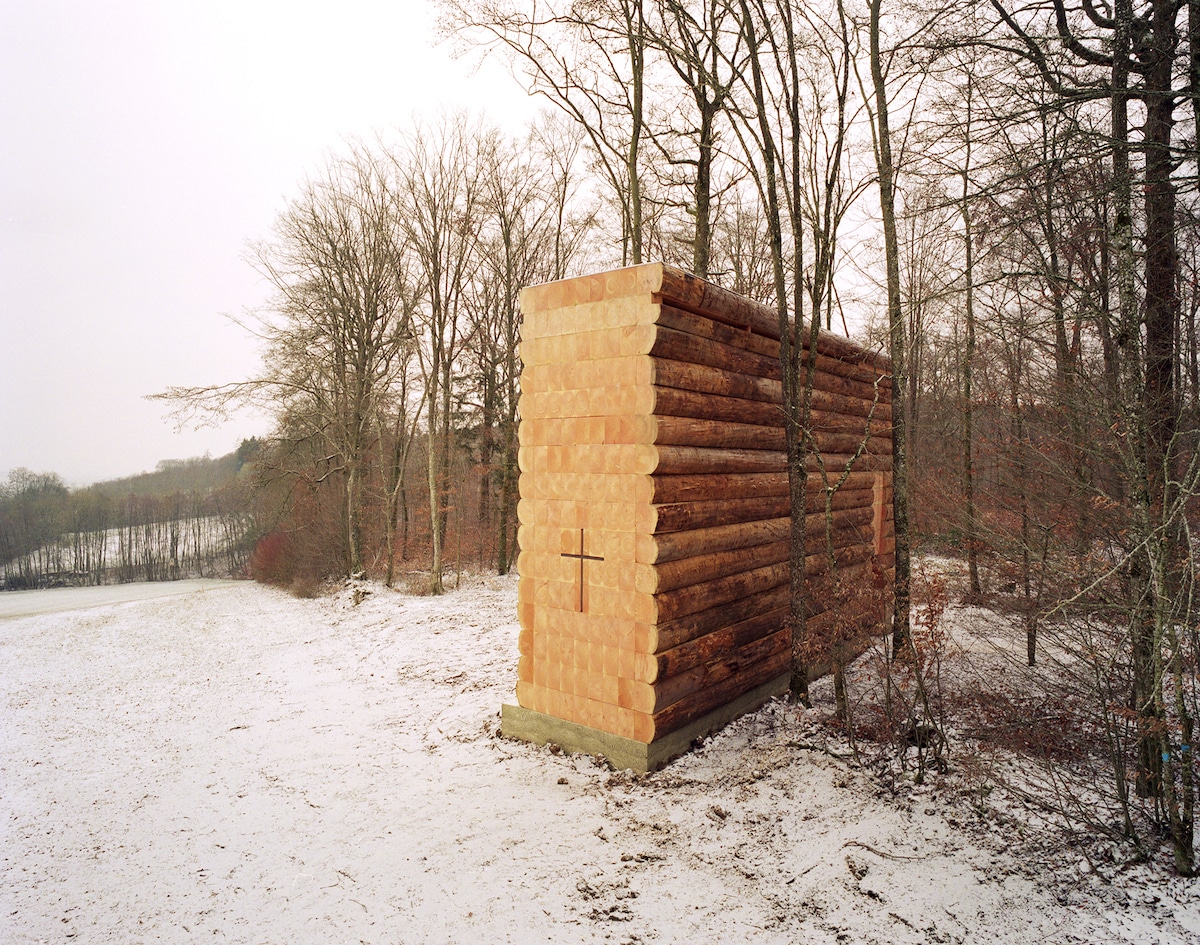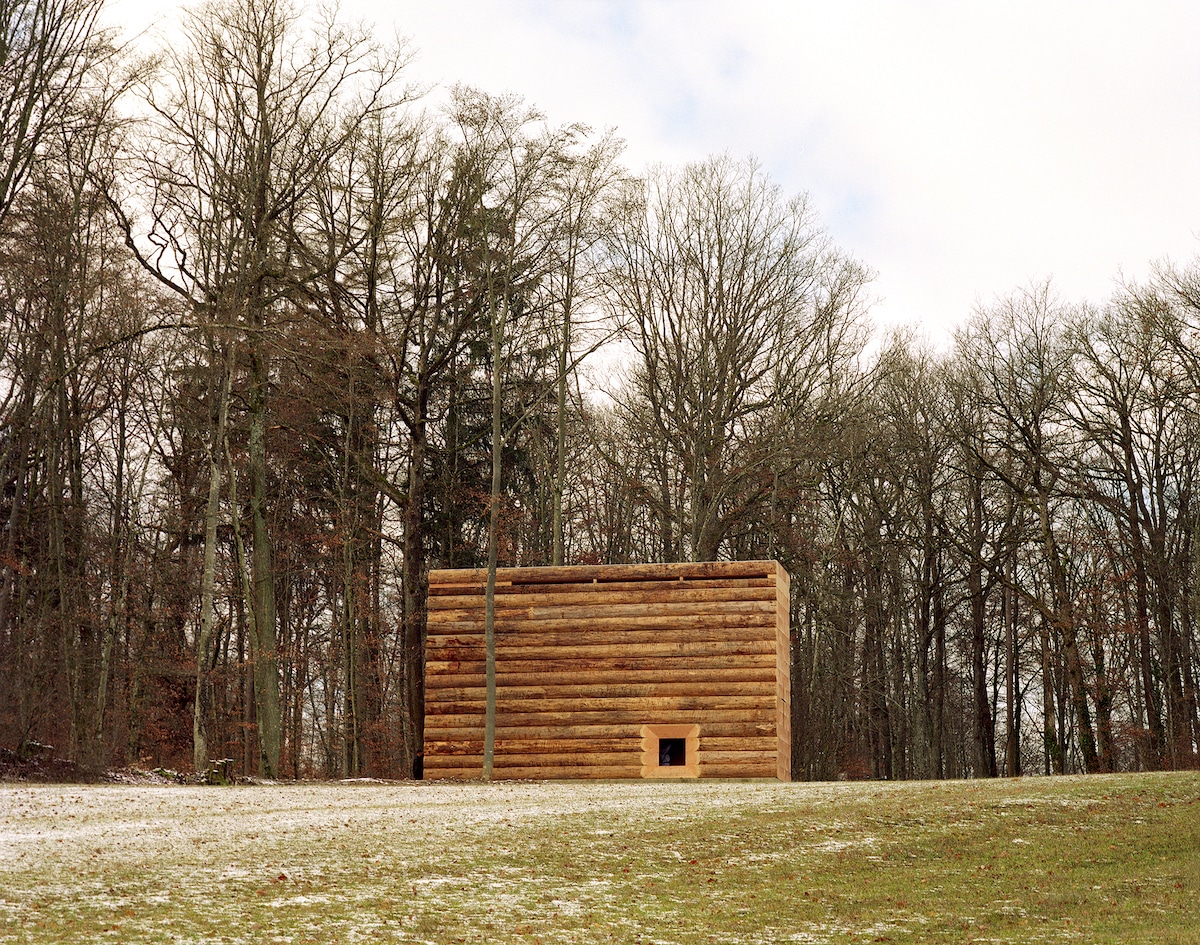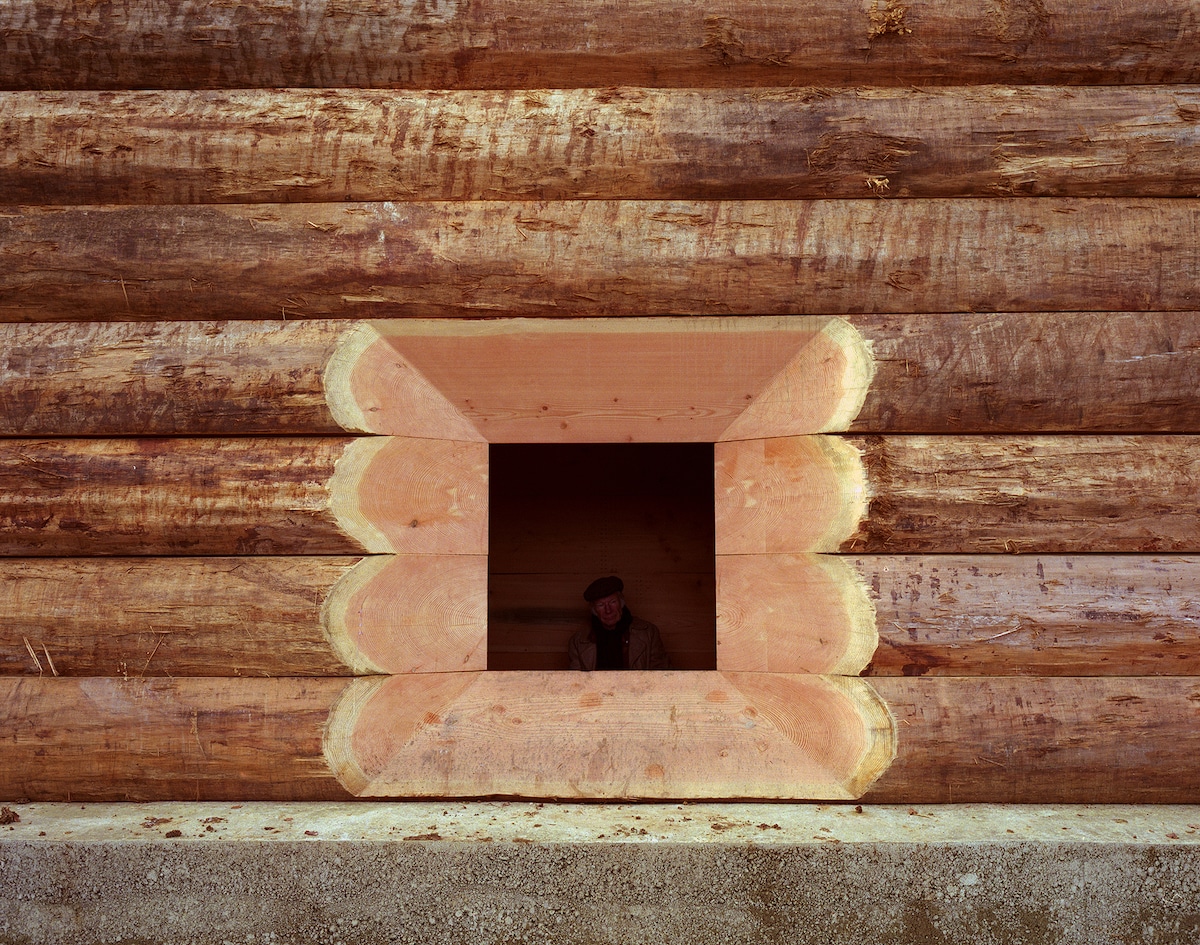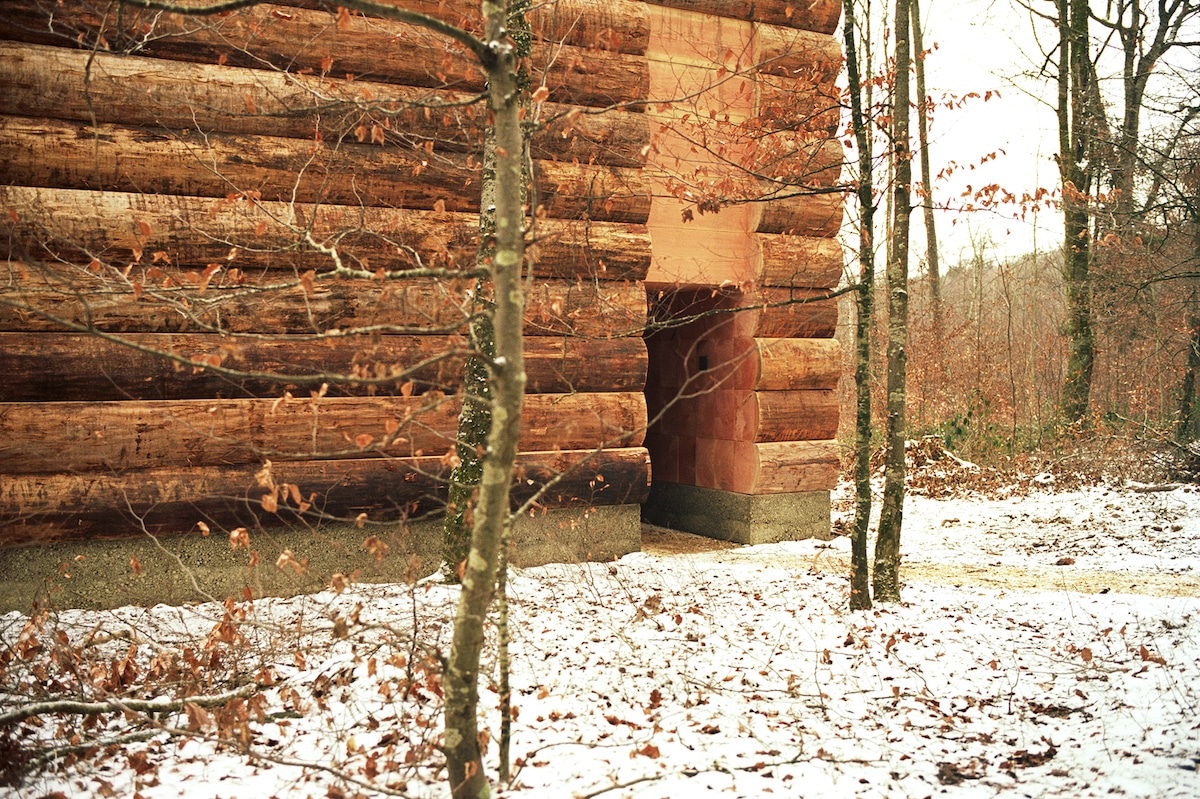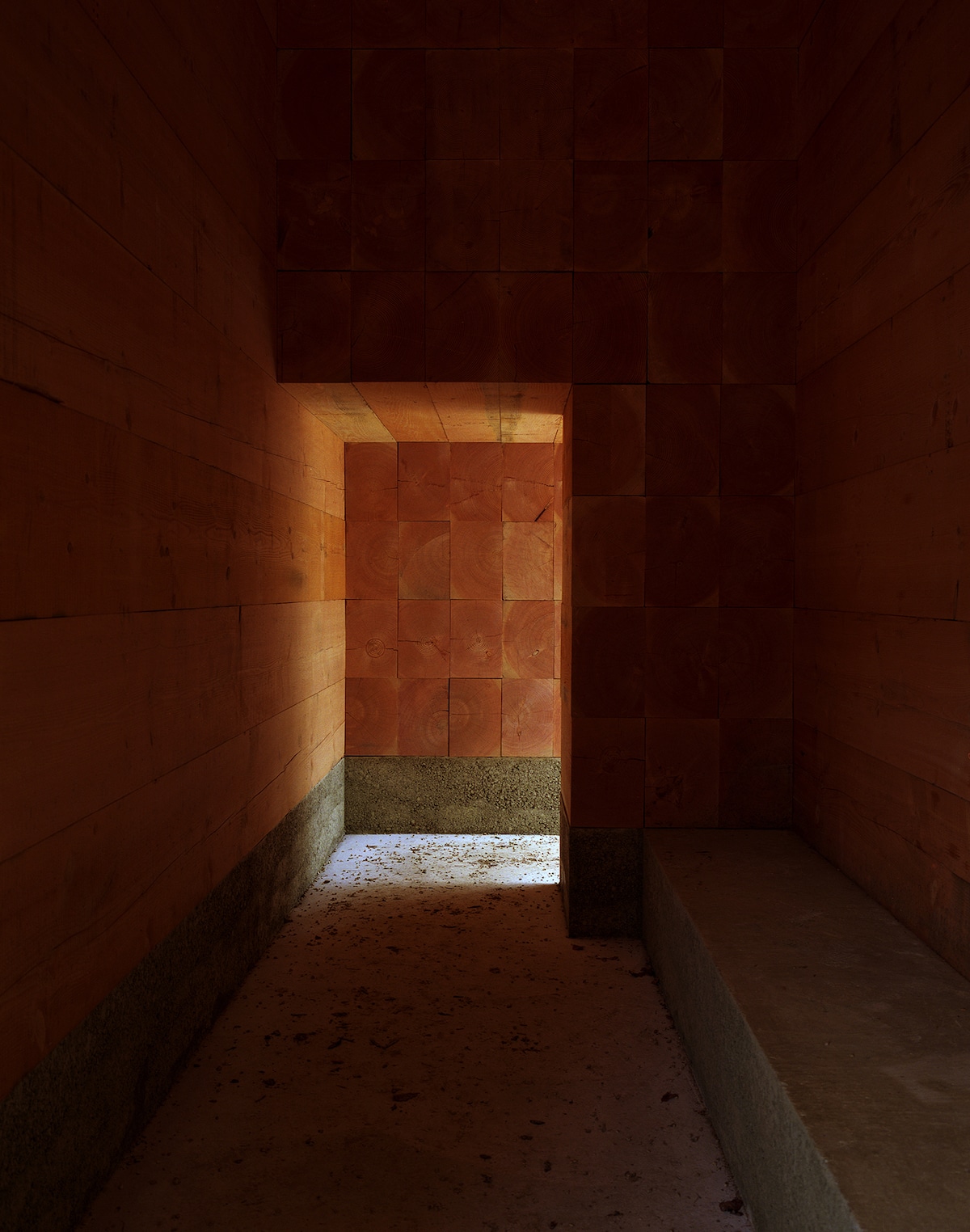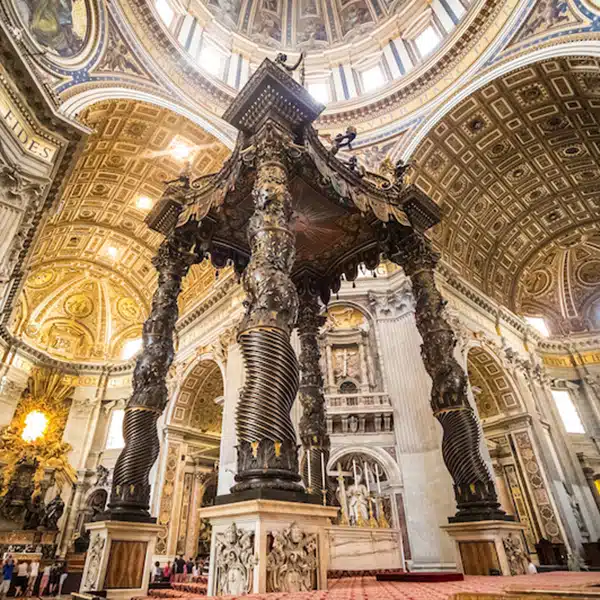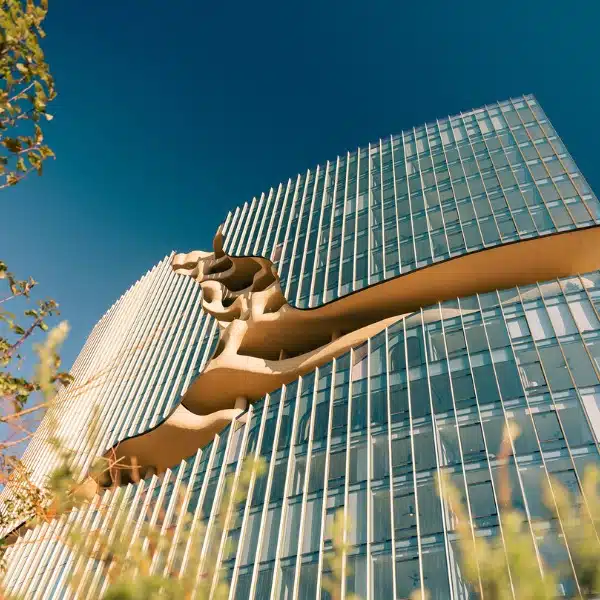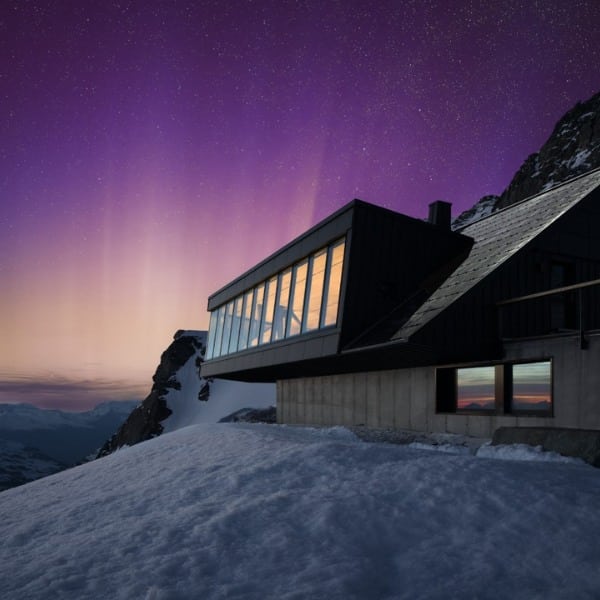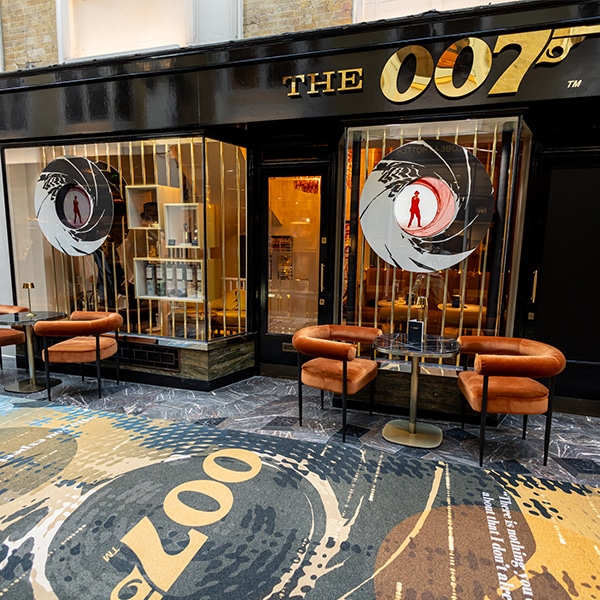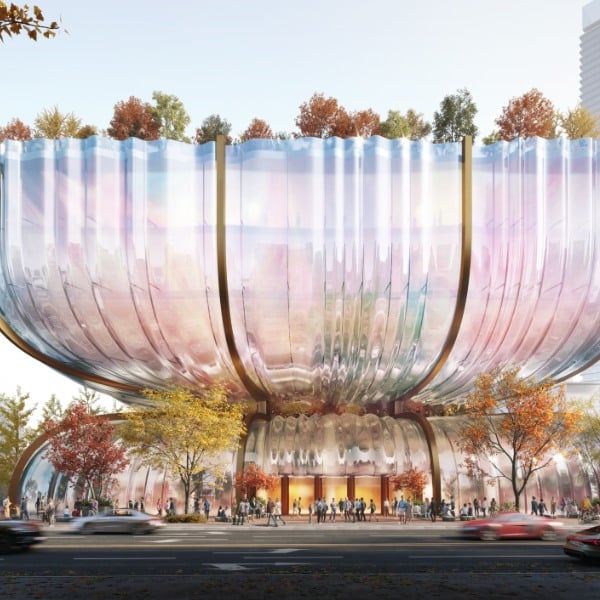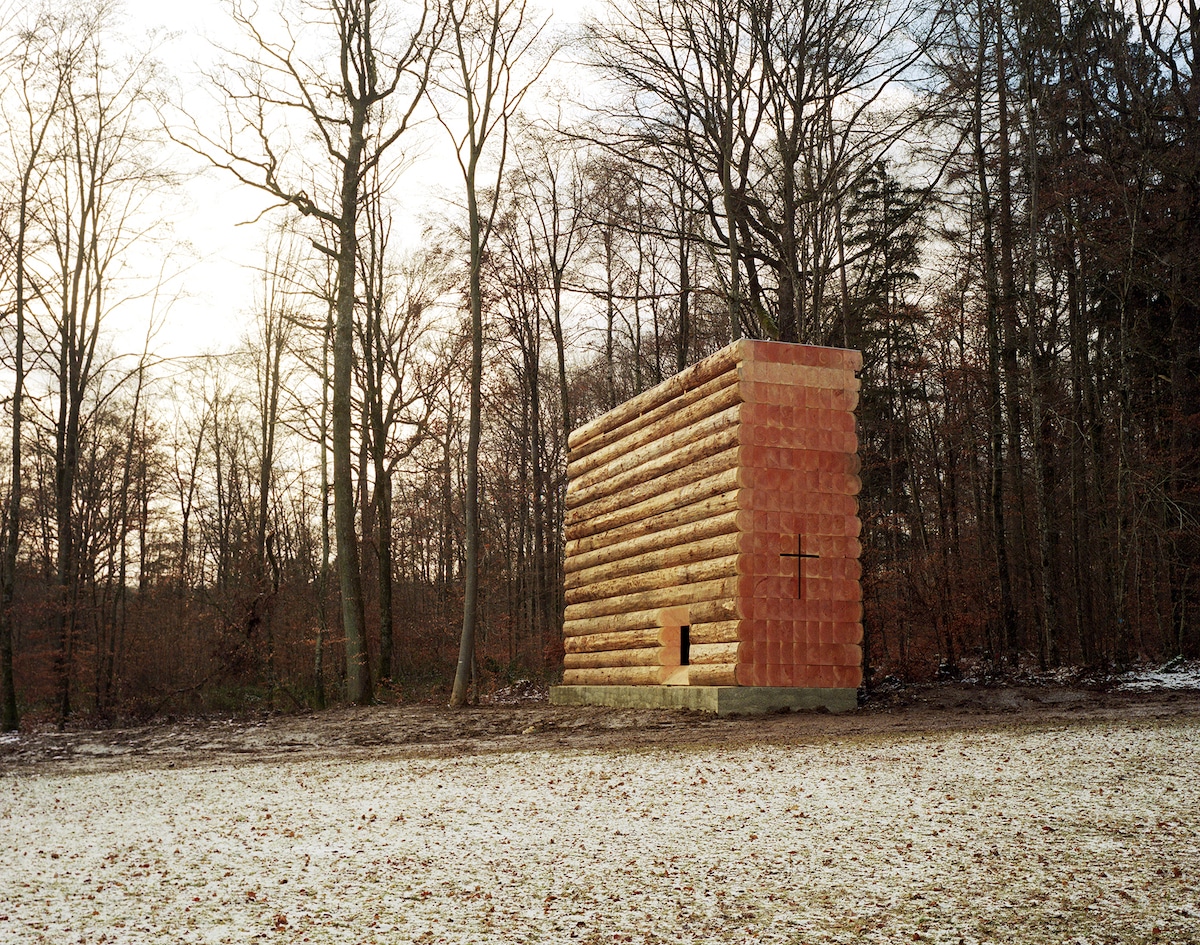
Created as a place of respite and reflection, John Pawson‘s wood chapel in southwestern Germany follows a long tradition of wayside structures in the area. This rustic, minimalist piece of architecture rises gently into the landscape, the rough-hewn logs blending into the environment. Pawson was commissioned by the Siegfried and Elfriede Denzel Foundation to create the modern chapel as part of the Sieben Kapellen (Seven Chapels) project, which aims to create these sanctuaries for cyclists to take shelter.
As part of the commission, the award-winning British architect was given a few parameters. All of the chapels for the project were to be constructed from timber, include seating, and have a cross incorporated. Sticking to his classic, minimalist aesthetic, Pawson wished to create a piece of architecture that would not be invasive. “People should encounter the chapel as a found object at the transitional point between the forest and open ground, rather than as a conventional work of architecture,” the firm writes. “The structure is thus framed as the simplest of gestures.”
A neat stack of 61 Douglas fir logs forms the chapel's structure. Each log was individually selected and donated to the project by the Danish company, Dinesen. Gumpp & Maier then executed Pawson's vision by leaving the thick cuts of wood visible and glorifying the texture and grain of the materials. The rectangular form is punctuated by a small entryway and a single, low-set window that frames the church spire found in the nearby village of Unterliezheim. An austere bench runs the length of the chapel, providing a place for visitors to rest their legs. To incorporate a cross, Pawson had a simple slit cut into the logs, allowing the light to fill in the form in a manner that recalls Tadao Ando‘s Church of Light.
The use of timber in construction not only keeps the chapel in line with the surrounding environment, but provides warmth and coziness within the interior. Light filters in from the narrow clerestories set high into the ceiling, dimly illuminating the interior and allow one's focus to remain on the cross and the window. In this way, Pawson deftly uses the architecture to help direct the entire experience one lives while inside the chapel.
John Pawson's minimalist wood chapel in Germany is formed from a stack of 61 Douglas fir logs.
